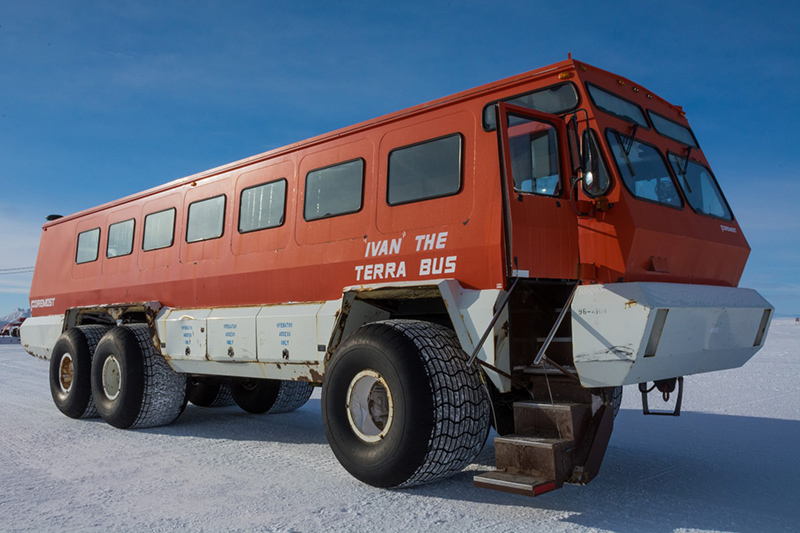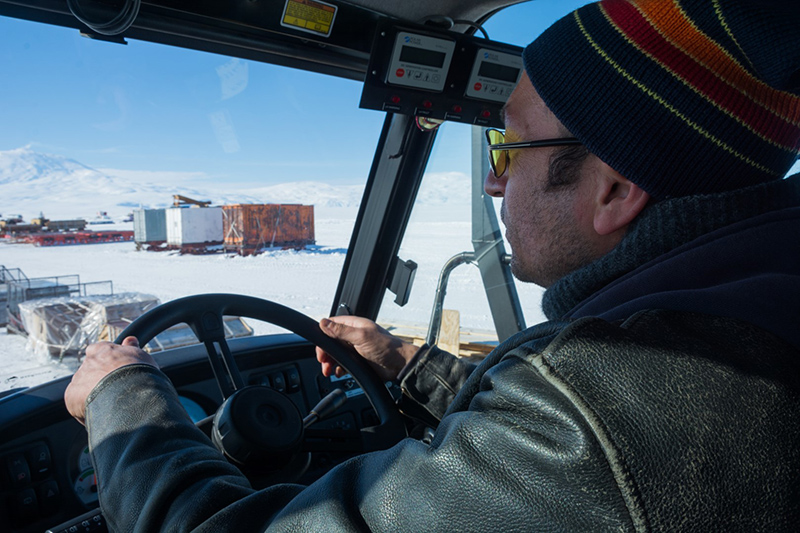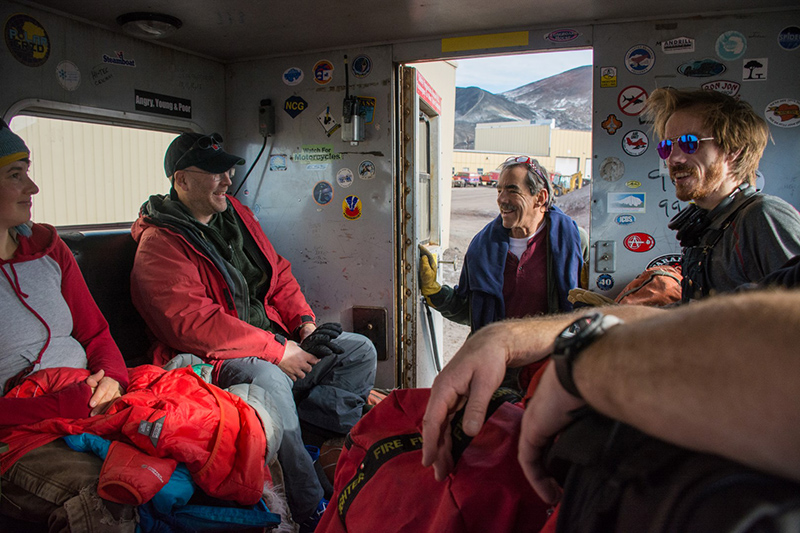
Photo Credit: Mike Lucibella
|
Driver Manuel Garcia climbs into the driver’s seat of the enormous Kress, one of the vehicles specially outfitted for driving
passengers around McMurdo Station.
|
Podcast: McMurdo Station on the Move
By Michael Lucibella, Antarctic Sun Editor
Posted August 2, 2017

Photo Credit: Mike Lucibella
Ivan the Terra Bus, probably the most famous vehicle on the station, seats 56 people and is primarily used to ferry people to and from the airfields.
In Antarctica, scientists conduct cutting edge research on a harsh and barren continent. It’s no easy task, but to help make it happen the U.S.
Antarctic Program employs a small army of support staff to get these researchers the supplies they need, transport them to where they need to go
and keep them safe throughout.
A lot of the jobs they do are the same that any small town needs to function, often with a specialized twist that comes with working in such a
remote place, but others can be less obvious. The Antarctic Sun Podcast is taking a behind-the-scenes look at the workers and what they do to
make science at the bottom of the world possible.
This week: The Shuttles Department
One of the first things that nearly everyone sees when they first step off the plane after arriving at McMurdo Station’s airfield is the brightly
colored vehicles from the shuttles department. It’s a few miles from the frozen runway to the station proper, so every day the department’s drivers
go out on dozens of trips, conveying hundreds of people along routes around town. Mass transit may not be one of the first things that comes to
mind when thinking about operations on the icy continent, but without it McMurdo Station wouldn’t function.
The vehicles the department uses come in all shapes and sizes, ranging from modified 15-passenger vans to giant tractors pulling a 65-person
passenger compartment. Each vehicle’s oversized tires spread out their weight over compacted snow, letting them drive safely across the snow
roads built on top of the Ross Ice Shelf.
Photo Gallery

Photo Credit: Mike Lucibella
The Kress, custom-built for hauling people around Antarctica, is one of the biggest vehicles on the continent and also used mostly for trips out to the airfields.
|

Photo Credit: Mike Lucibella
Seated in its elevated cabin, Manuel Garcia drives the Kress past storage containers on his way to pick up new arrivals from the Williams airfield.
|

Photo Credit: Laura Gerwin
The bright orange Deltas can carry about a dozen people. With their wide tires, they can make it through all but the toughest snow conditions.
|

Photo Credit: Mike Lucibella
Shuttle Bob (center) checks on the riders loaded into the passenger cabin of one of the passenger Deltas before driving to the airfield.
|

Photo Credit: Mike Lucibella
As the inventory stickers on their dashboards indicate, the Deltas have been around for a while. They were first brought down during the late ‘70s and early ‘80s, when the U.S. Navy still operated the station.
|











